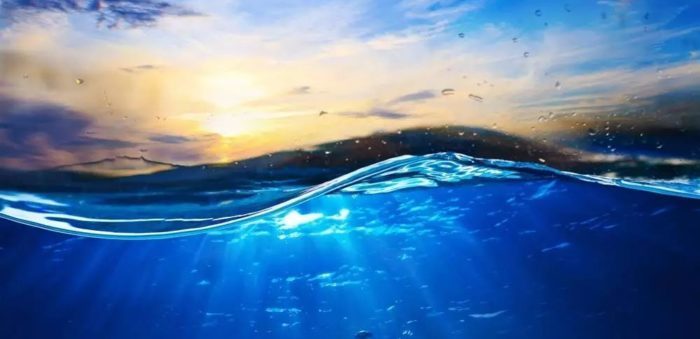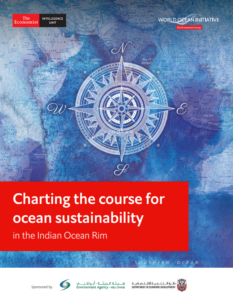Charting the course for ocean sustainability in the Indian Ocean Rim is a report, sponsored by Environment Agency Abu Dhabi and the Department of Economic Development Abu Dhabi, highlighting key ocean challenges facing the Indian Ocean Rim countries. It also showcases initiatives carried out by governments and the private sector to address these challenges.
The report analyzes how ocean sustainability can be achieved through the lens of developing nations, taking into consideration the challenges of a low income population as well as an environmental regulatory framework that is not mature yet.
The investigation focuses into five key ocean issues in the region:
- Degradation of marine ecosystems;
- Plastics pollution;
- Unsustainable fishing;
- Extraction of non-renewable marine resources;
- Rising salinity from desalination.
It specifically highlights key steps that governments and companies in the Indian Ocean Rim need to take on the path to ocean prosperity. Its key findings can be summarized as following:
The Indian Ocean is vital to ocean sustainability
The Indian Ocean accommodates 30% of the world’s coral reefs, has 40,000 sq km of mangroves, some of the world’s largest estuaries, and nine large marine ecosystems (LMEs). About 13% of the world’s wild-caught fish is from the Indian Ocean. It plays a key role in international trade, carrying 40% of the world’s containerised cargo and 80% of the world’s oil shipments. Mapping the way for the sustainable use of these resources is crucial, especially for coastal communities based on marine resources.
Land-based initiatives can address ocean issues
Brine from desalination plants, often discharged into the ocean, is being diverted into aquaculture and agriculture in the UAE and being used for salt production in Somaliland. Ocean sustainability initiatives therefore must include a wide range of stakeholders, considering wider climate change considerations too.
Advanced technologies are useful
Illegal fishing is dramatically reduced across Indonesia with opensource satellite data and GPS technology lowering the cost of mapping mangrove forests across Sri Lanka. Information technology also enables public engagement: in Zanzibar, Tanzania, and Kenya. Moreover, understanding emerging technologies and how these can be used can go a long way in advancing efforts towards ocean sustainability.
Ocean challenges are commercial opportunities
In a southern state in India, plastics in the ocean are being collected and repurposed to build roads. In the Seychelles a focus on ocean sustainability is creating new opportunities to increase finance for economic development. In Thailand, seagrass conservation is strengthening conch production in some villages.
[smlsubform prepend=”GET THE SAFETY4SEA IN YOUR INBOX!” showname=false emailtxt=”” emailholder=”Enter your email address” showsubmit=true submittxt=”Submit” jsthanks=false thankyou=”Thank you for subscribing to our mailing list”]
Ignoring pressing ocean issues such as plastic pollution and unsustainable fishing not only increases the risks to the environment and people, but also means that opportunities for economic diversification and sustained, inclusive growth may be overlooked.
Sustainable projects are imperative
Projects have to encompass three key characteristics, the report says:
- Scalability;
- Leverage;
- Security.
What is more, they must have an economic model that provides a return on investment and a real sustainability benefit.
Within sustainable finance, although ocean projects will have unique considerations, experts we interviewed conclude that blue finance does not need to be treated differently from the “green finance” market
The report says.
Finally, strong political will can drive a blue economic growth. Setting targets and policies captures the imagination, provides a clear checklist for countries and partners to get behind and leads to an enabling environment for the blue economy.
See more information in the PDF below































































